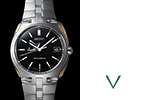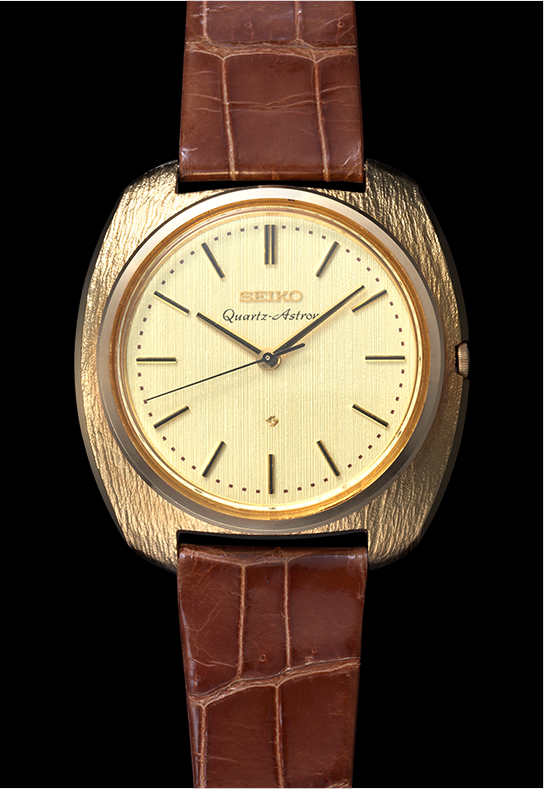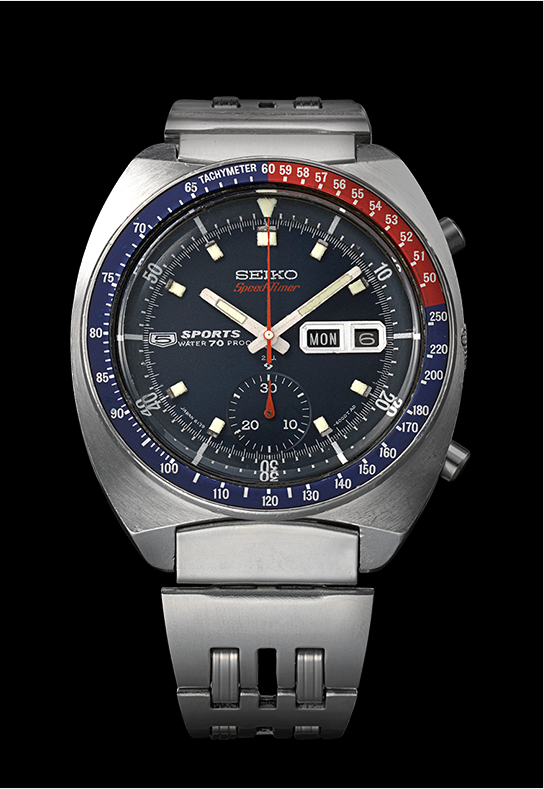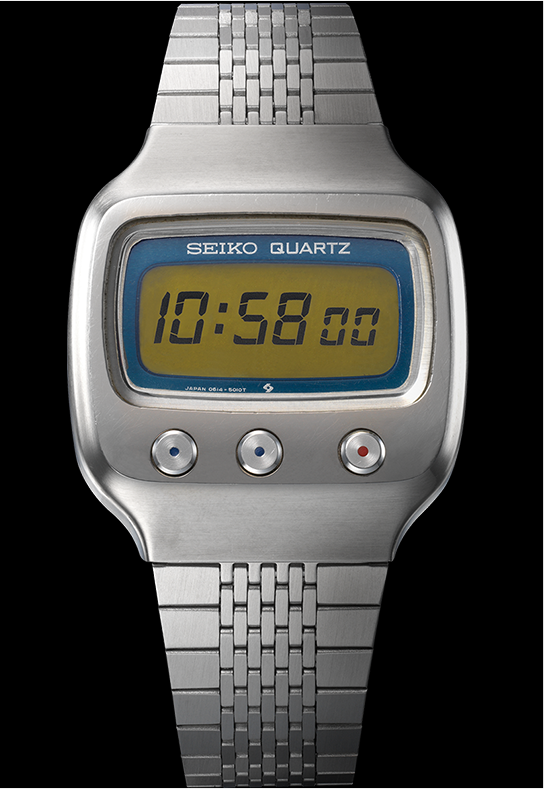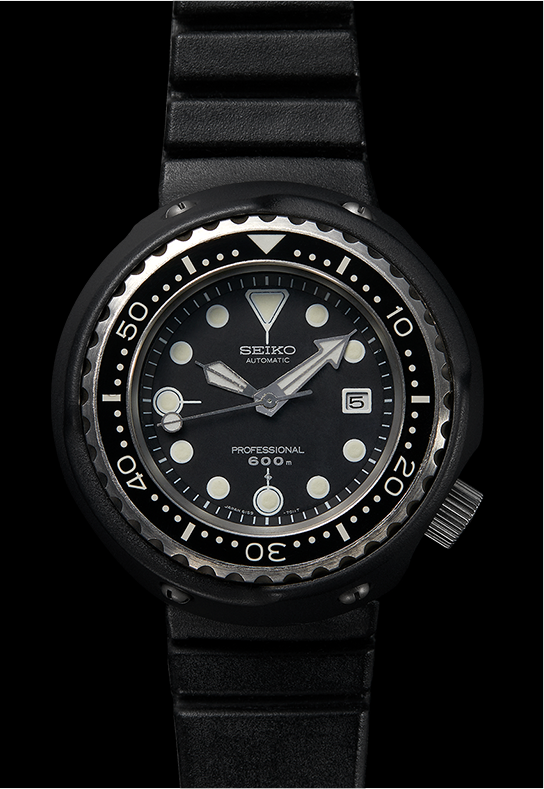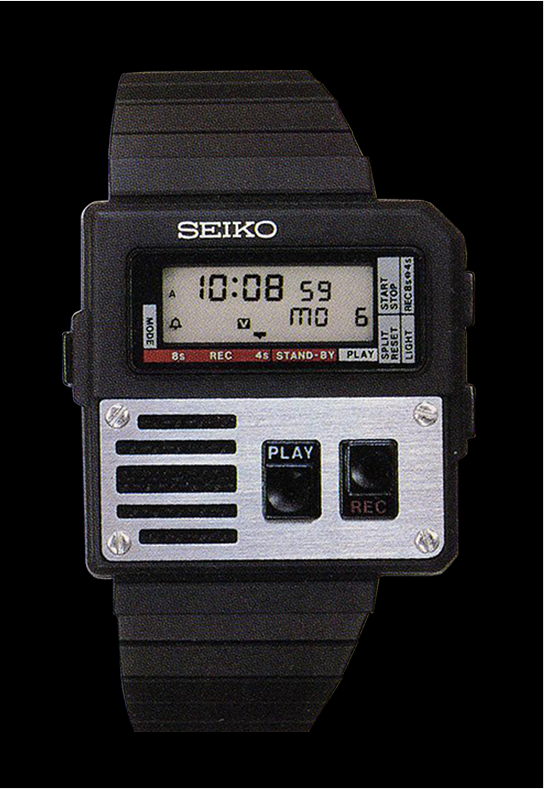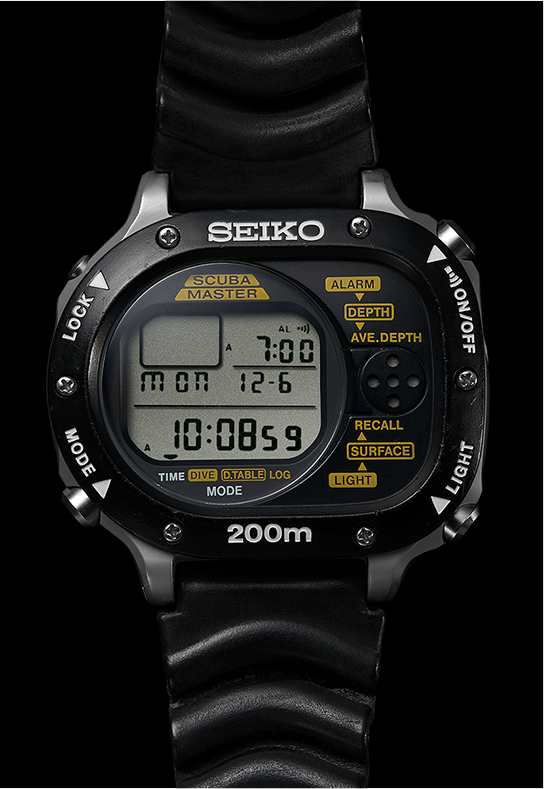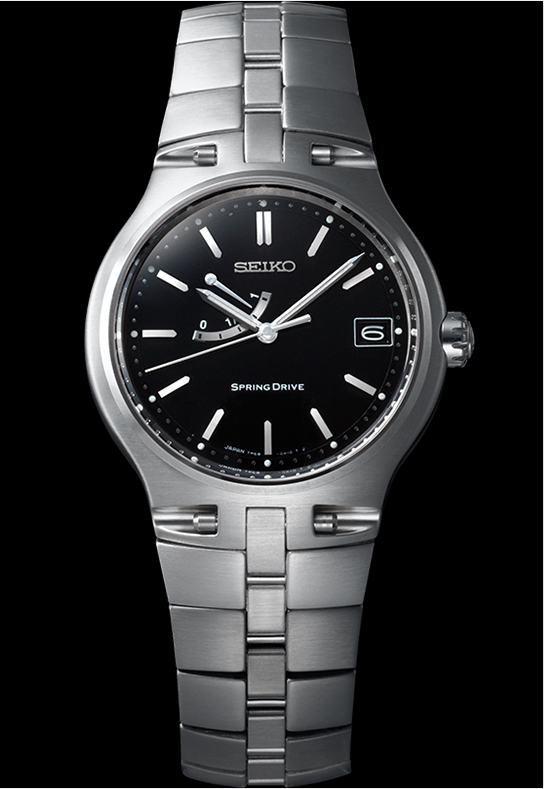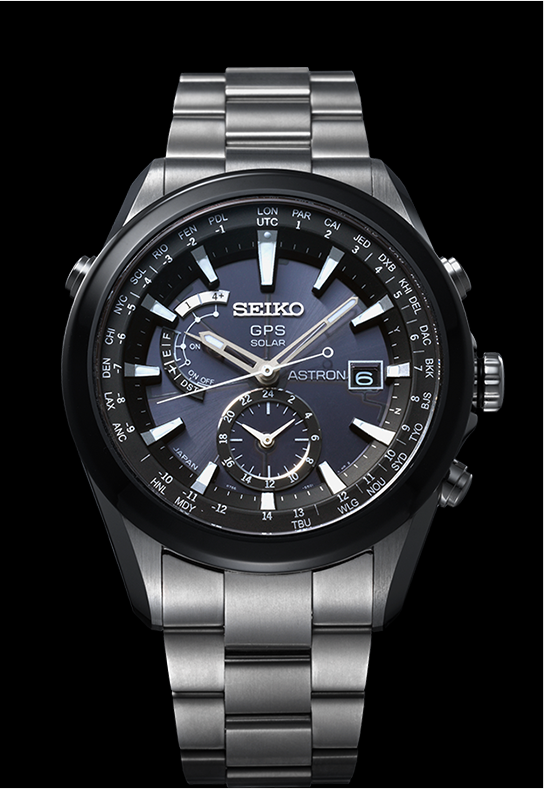World Firsts(*when it was released)
Successive Waves
of Technological Advances

In 1960, Seiko unveiled Grand Seiko and showcased the pinnacle of its mechanical watchmaking to the world. Until then, Seiko had been focused on catching up with the world, but from that point forward, it was ready to lead with continuously epoch-making technological innovations. The first breakthrough came with the invention of a quartz wristwatch in 1969. With this innovation, Seiko achieved accuracy greatly surpassing that of mechanical watches of the time and left a lasting impact on the watch industry. In the same year, Seiko released the first automatic chronograph equipped with a vertical clutch, continuing to make significant contributions in the history of mechanical watchmaking. From there, Seiko continued to introduce new waves of technological world firsts to the watch industry. These innovations included a difficult-to-machine titanium cased diver’s watch; Spring Drive, powered by a main spring while boasting the same accuracy as a quartz watch; and even a GPS solar wristwatch. Moreover, there are featured functions such as audio recording and playback, which can be found on smartphones nowadays, but were the most advanced at the time. Seiko strives to continue to be a pioneer for the future of the watch industry.
-
13
World’s First
Quartz Watch1969Seiko Quartz Astron
On December 25, 1969, Seiko was the first in the world to introduce a quartz wristwatch, the Quartz Astron, which was approximately 100 times more accurate than standard mechanical wristwatches.
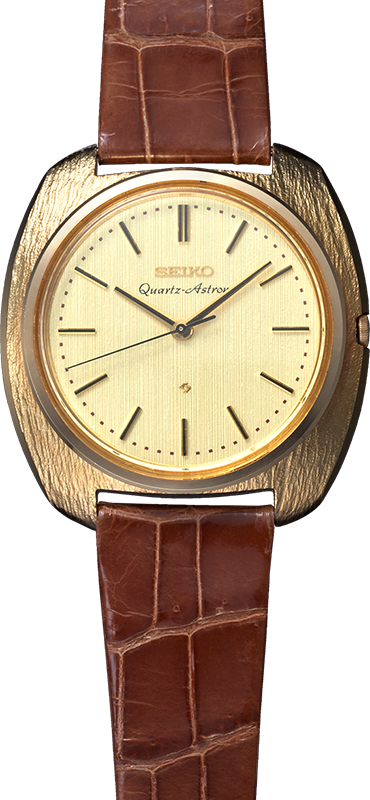
-
14
World’s First
Automatic
Chronograph Watch
Equipped with a
Vertical Clutch19695 Sports Speedtimer
The world's first automatic chronograph was mass-produced and commercialized in 1969. It was equipped with Seiko’s Caliber 6139, featuring a column wheel and vertical clutch, an important mechanism in the history of watchmaking.
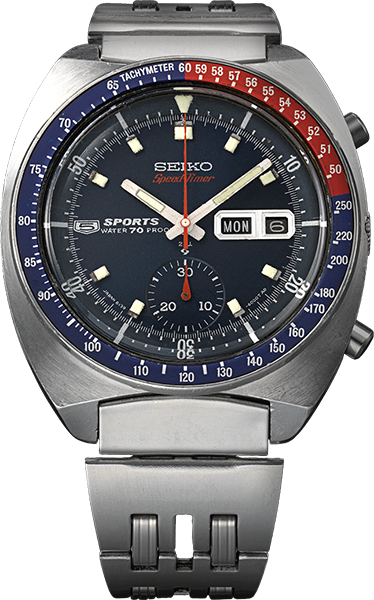
-
15
World’s First
6-Digit Liquid
Crystal Display1973Quartz LC V.F.A. 06LC
In 1973, Seiko launched the world’s first digital watch with a 6-digit liquid crystal display (LCD). Seiko developed its own LCD and established a constant display system for hours, minutes, and seconds.
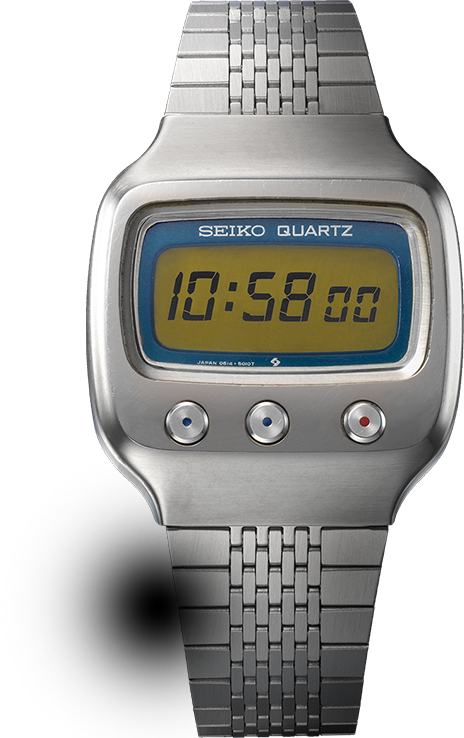
-
16
World’s First
Titanium Case Watch
with 600m
Water Resistance1975Professional Diver 600m
This watch came about as the result of a specific request for “a watch that can handle underwater work below 300m.” Seiko responded with a real diver’s watch that was actually good to 600m. The watch, which was ideal for saturation diving, was released in 1975. Its use of titanium for the case was a world first.
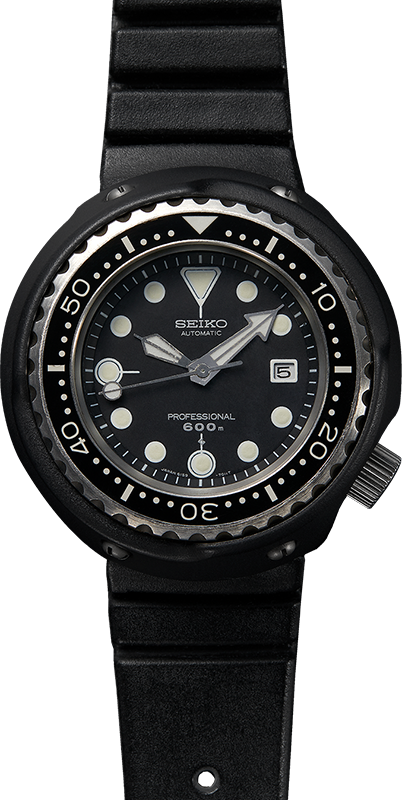
-
17
World’s First
Watch to do
Recording
& Playback1983Voice Note
Seiko had long been working on the development of instruments to display information other than time. In 1983, Seiko launched the world's first wristwatch with an audio recording and playback function. It could record a voice message of up to 8 seconds.
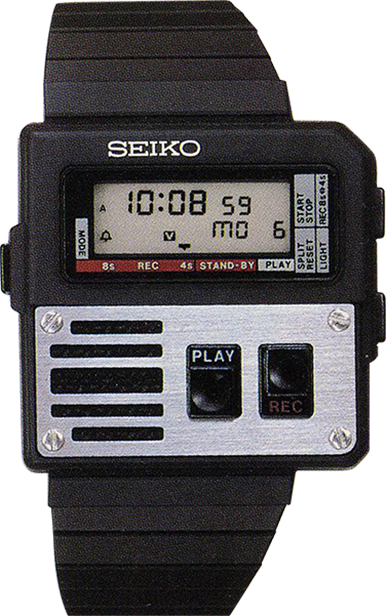
-
18
World’s First
Watch Equipped
with a
Diving Computer1990Seiko Sports Scubamaster
The world’s first wristwatch equipped with a diving computer that automatically measures, displays, and records diving time and depth data along with hazard-prevention information to help divers.
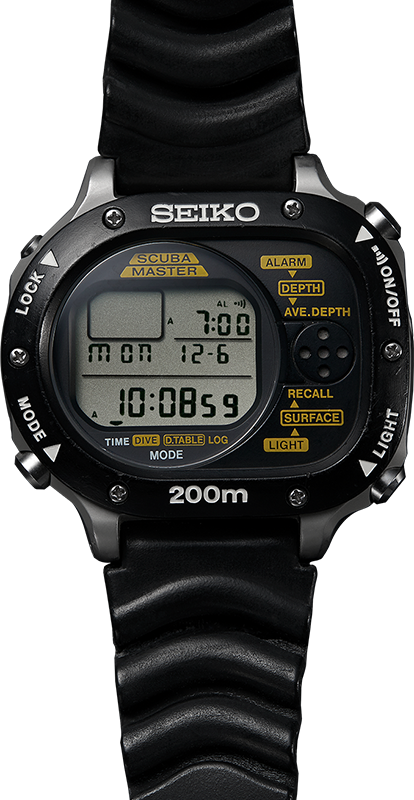
-
19
World’s First
Watch Combining
Mechanical and
Quartz Technologies1999Spring Drive
Spring Drive, a name that is now part of the history of watch development, was introduced in 1999. It uses a mechanical driving force that is controlled by a quartz oscillator, making it a hyper-accurate mechanically driven timepiece. It was the first in the world to contain a hybrid movement.
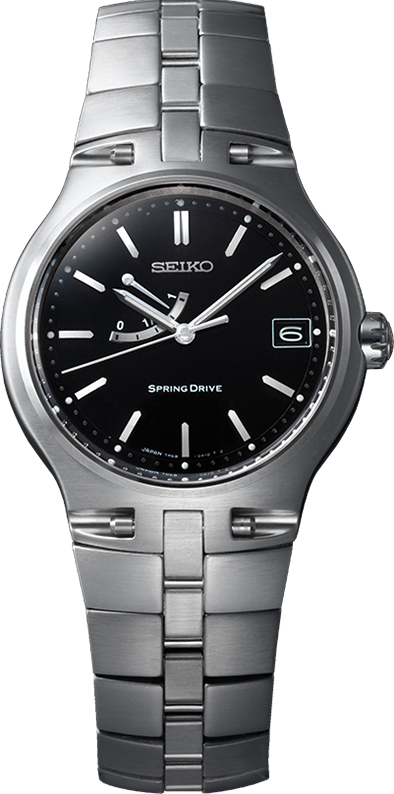
-
20
World’s First
GPS Solar Watch2012GPS Solar Watch
Seiko AstronSeiko’s proprietary GPS Solar Watch receives signals from GPS satellites. With the push of just one button, it displays ultra-precise time for any time zone throughout the world. This is the standard for the next generation of business watches.
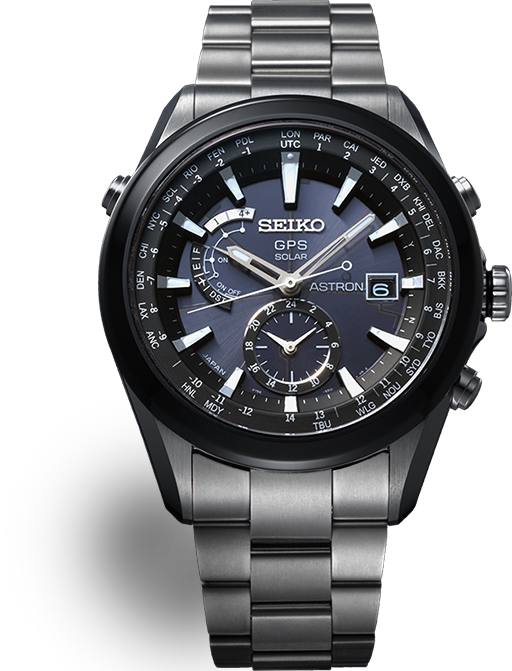
21
Making Watches More
Accessible & More Enjoyable
to a New Generation
In 1963, Seiko launched the Seiko Sportsmatic 5 (also known as the Seiko 5), the first Japanese automatic winding day-date model. Over the years, the watch evolved, retaining the five key features listed above, but improving the water resistance, adopting luminous inserts, and adding a stronger crystal. This much-improved version was released in 1968 as Seiko 5 Sports. It became popular worldwide, especially among athletes and active users. Much of its popularity was due to its attractive design, which featured dials in a range of vivid colors. The Seiko 5 Sports was initially aimed at global markets, but with the model’s relaunch in 2018, it once again focused on building a stronger foundation in Japan. In addition to its bold design, it boasts a high-quality exterior and a very advanced movement. Together with an extensive line-up of other outstanding models, the Seiko 5 Sports shows off the global appeal of Seiko’s mechanical watches.

Five Key Features of Seiko 5 Sports:
- Automatic movement
- Water resistance
- Day-date display at
the three o’clock position - Recessed crown at
the four o’clock position - Highly durable case and
bracelet/strap
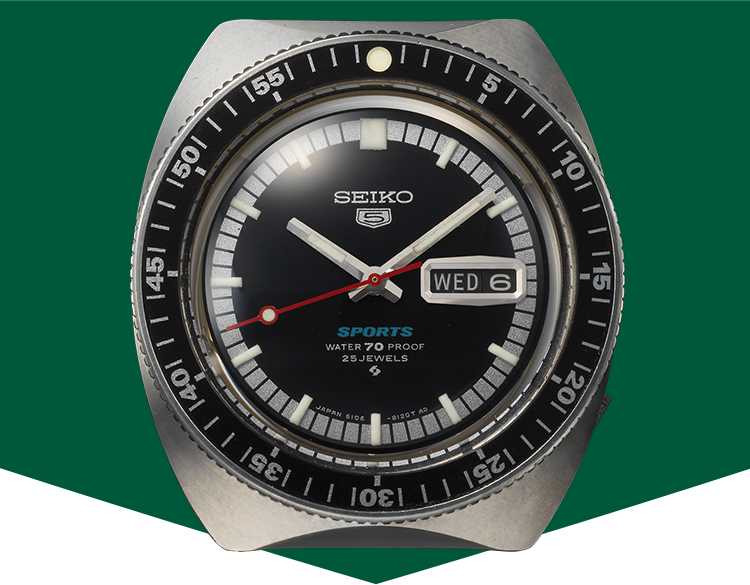
First Seiko 5 Sports
The watch was first released in 1968 in response to a sports boom in Japan. In addition to featuring 70 m water resistance and a Hardlex crystal, this watch came in a wide range of colors, which made it especially popular with younger consumers and global watch fans.
Seiko 5 Sports 55th Anniversary Model

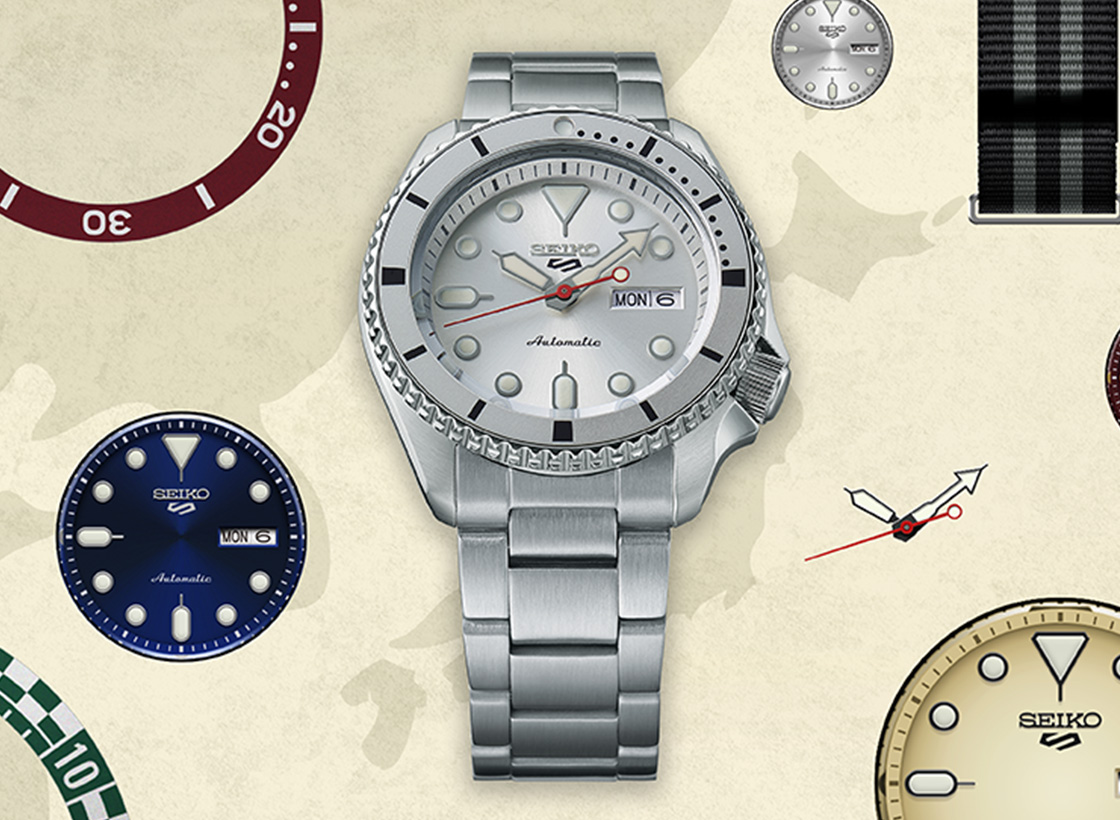
Customize a 5 Sports
In 2022, to commemorate the 55th anniversary of the brand, Seiko launched an interactive campaign, allowing users to customize the design of the watch on the website. Popular design combinations were released as standard items for sale, and this became a hot topic in the watch world.
First 5 Sports
Inspired Design
In commemoration of the collection’s 55th anniversary, Seiko released a limited-edition model inspired by the first 5 Sports watch. While retaining the original design, the new model was completely updated, including bracelet functions and improved water resistance to 10 bar.
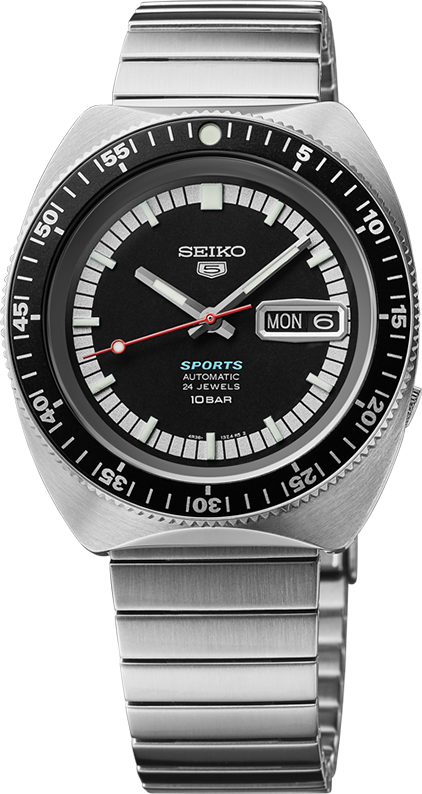
The Addition of
a Practical GMT
Function
This is the best model for international travelers. Without at all detracting from the sporty design, Seiko added a GMT function to display a second time zone. By using the rotating bezel, it’s possible to track three time zones.
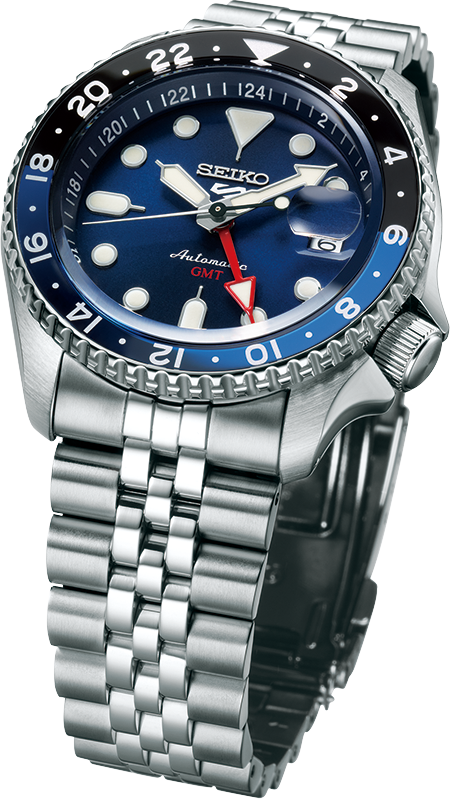
Thin, Light,
& Beautiful
Many high-end watch brands pride themselves on producing thin dress watches. This is not only because there is always demand for wristwatches suitable for formal attire, but also because manufacturing a highly accurate movement that fits into an extremely thin case is proof of outstanding technological ability.
In the 1950s, Seiko pursued both “high precision” and “thinness.” In 1960, Seiko introduced the Seiko Goldfeather, which was light, accurate, comfortable to wear, and very attractive. It took advantage of the Caliber 60, which was just 2.95 mm thick, making it the world’s thinnest three-hand movement at that time.
Not satisfied with having produced a unique world-class product, Seiko went on to create the U.T.D. (Ultra Thin Dress) watch. The U.T.D. inherited the beautiful design concept from the Goldfeather, but aimed for an even slimmer case, which would require an even thinner movement. The U.T.D. was released in 1969, featuring the new Caliber 6800, a two-hand movement with an astounding thickness of only 1.98 mm.
22
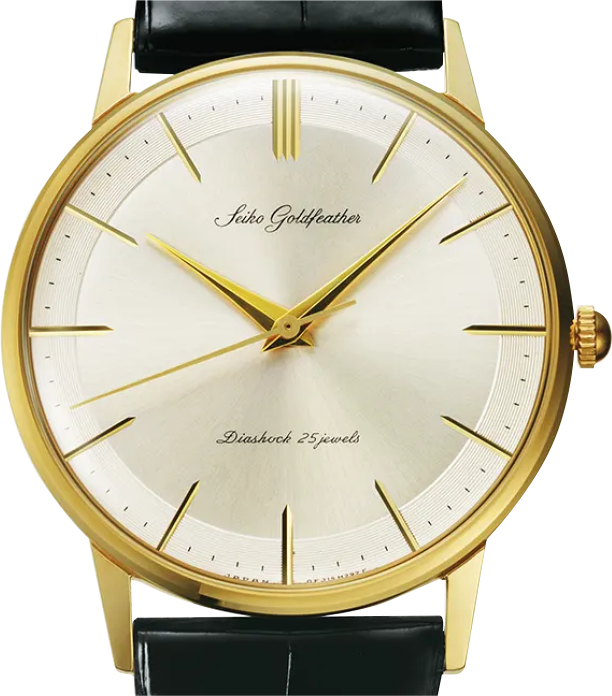
Seiko Goldfeather
In the 1950s, Seiko aimed for even higher precision and thinness. The Goldfeather was extremely light (“light as a feather”), and was equipped with the world’s thinnest three-hand movement at that time.
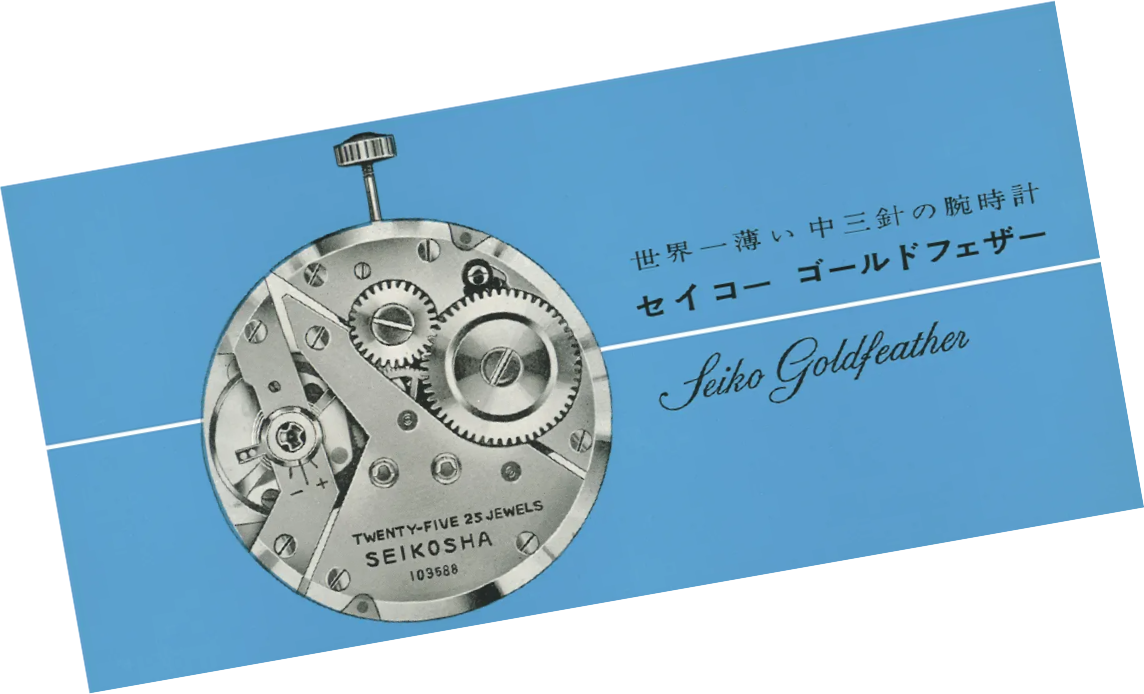
The Goldfeather was equipped with the Caliber 60, which was the world’s thinnest movement at the time, even though it had a second hand. This allowed the watch to be both thin and elegant.



The basic design principles of a dress watch are to make a small, attractive case and make the watch thin enough not to interfere with shirt sleeves. This masterpiece was a very chic accessory to business and formal wear.
23
1969Seiko U.T.D.
Never satisfied with past achievements, Seiko set its sights on creating an even thinner movement for a dress watch. Starting with the design concept of the Caliber 60, the company developed the new Caliber 6800, which achieved a thickness of only 1.98 mm. This movement powered the U.T.D. (Ultra Thin Dress) watch, a very classy timepiece without a second hand.
Never satisfied with past achievements, Seiko set its sights on creating an even thinner movement for a dress watch. Starting with the design concept of the Caliber 60, the company developed the new Caliber 6800, which achieved a thickness of only 1.98 mm.
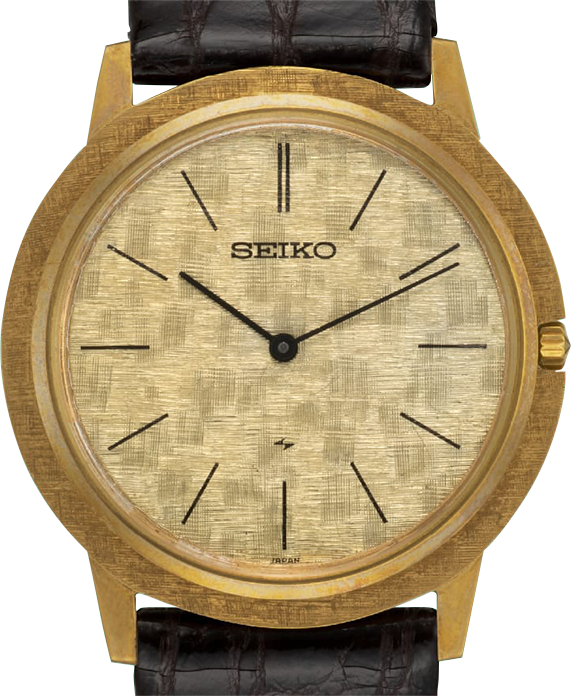
This movement powered the U.T.D. (Ultra Thin Dress) watch, a very classy timepiece without a second hand.
24
Seiko's First Revolution:
The Watch that Changed Everything
On December 25th 1969, Seiko released a watch that would revolutionize the watch industry overnight. It was the Quartz Astron, the world’s first quartz wristwatch. Seiko engineers were well aware that a quartz movement uses a battery instead of a mainspring, and that the electronic vibration of a quartz oscillator provided greater precision to those of a mechanical movement’s balance wheel. However, the quartz oscillator was difficult to downsize. The quartz clocks produced for broadcasting stations in 1959 were bigger than a large bookcase. Seiko engineers worked for years trying to shrink quartz movements, and finally, in 1967, they succeeded in creating a prototype small enough to fit inside a wristwatch. Another two years were spent refining and preparing to launch the Astron, a timepiece with 100 times the accuracy of a standard mechanical watch.
Seiko held key patent rights for this technology, such as the tuning fork quartz resonator, and chose to openly disclose its proprietary technologies, allowing watchmakers around the world access to this revolutionary new mechanism. At last, the Quartz Age for wristwatches had begun.
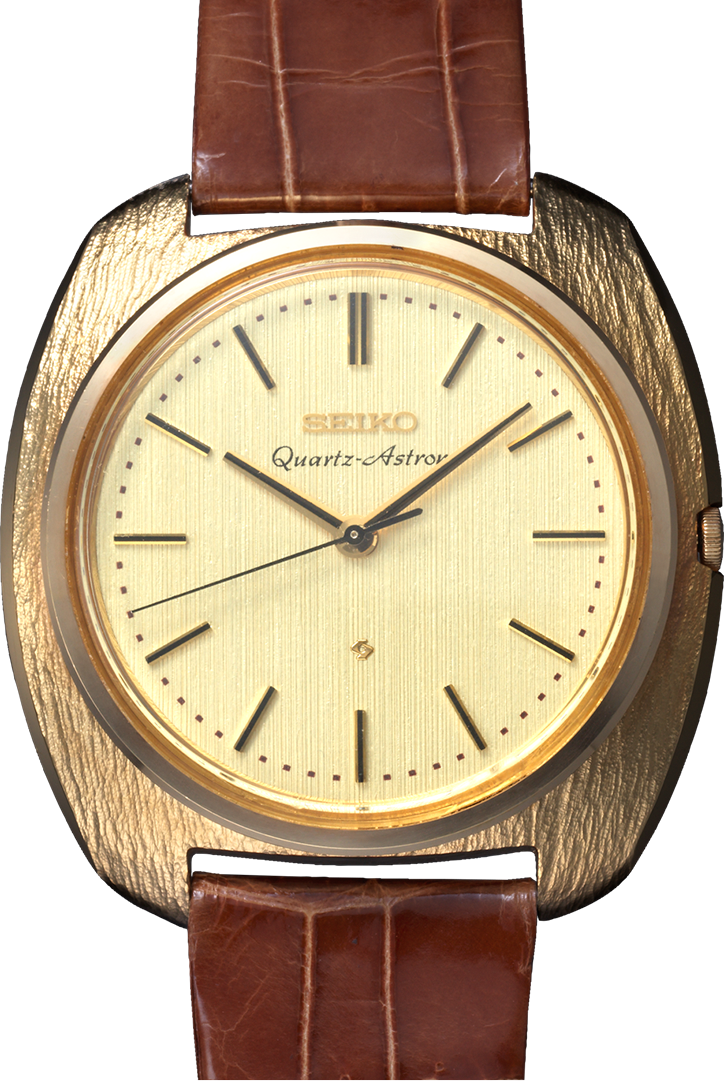
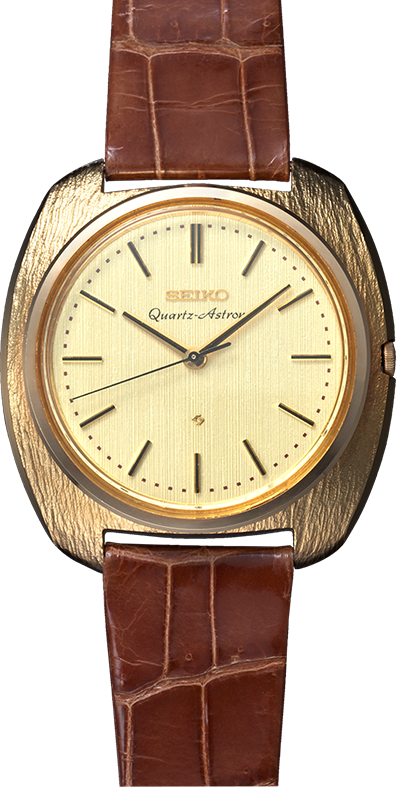
Seiko Quartz Astron
The world’s first quartz wristwatch. This model had a hand-engraved pattern and came in a lustrous 18K case. In addition to its phenomenal accuracy, it attracted attention for its price tag of JPY 450,000 which was more than many popular cars at that time.
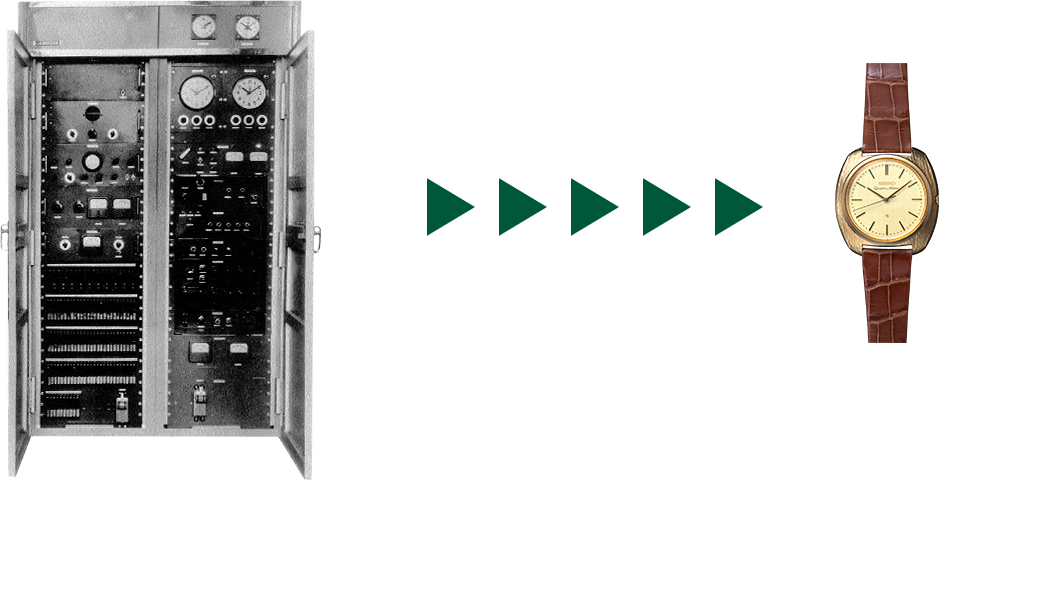
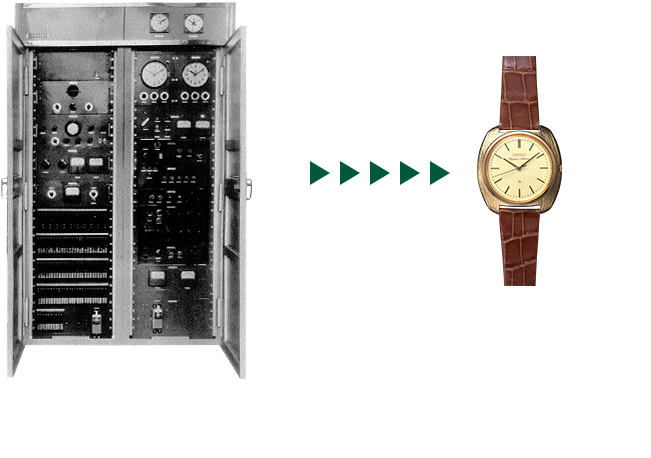
The phenomenally accurate quartz clock delivered to broadcasting stations in 1959 was about the size of a large bookcase. Shrinking that mechanism to fit into a wristwatch seemed impossible, but after much effort, Seiko succeeded in reducing it to 1/300,000 of the original size. With that remarkable breakthrough, the era of quartz watches began.
Caliber 35A: Accuracy of ± 5 seconds per month
The Astron was equipped with the Caliber 35A movement, which boasted exceptional accuracy of ± 0.2 seconds per day and ± 5 seconds per month. It had a diameter of 30 mm and a thickness of 5.3 mm, a dramatic reduction in size from the bookcase-size behemoth in broadcasting stations.
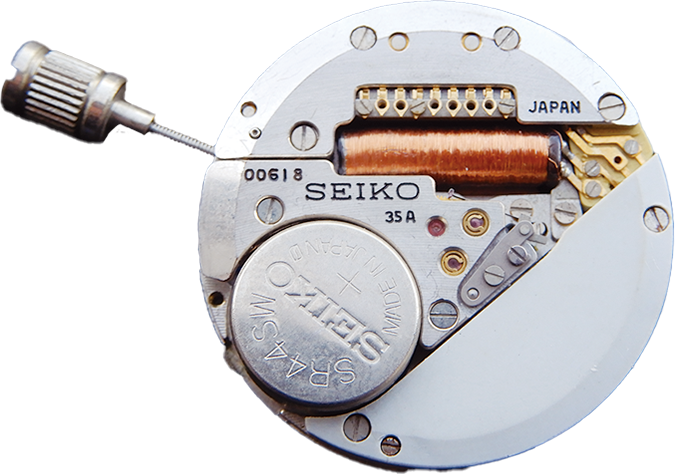
1970 The New York Times
The debut of the Astron, which managed to squeeze a stepping motor, a quartz oscillator, and a tiny IC into a wristwatch, became a worldwide event when it was written up in The New York Times.
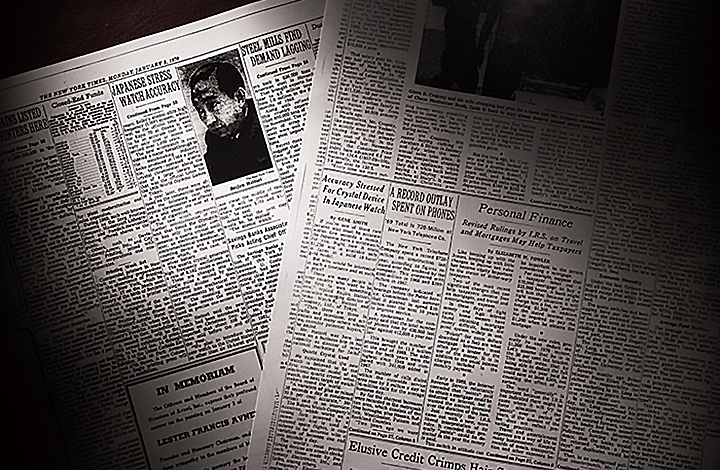
25
Seiko’s Second Revolution: GPS Solar
A Watch Connected to the Space
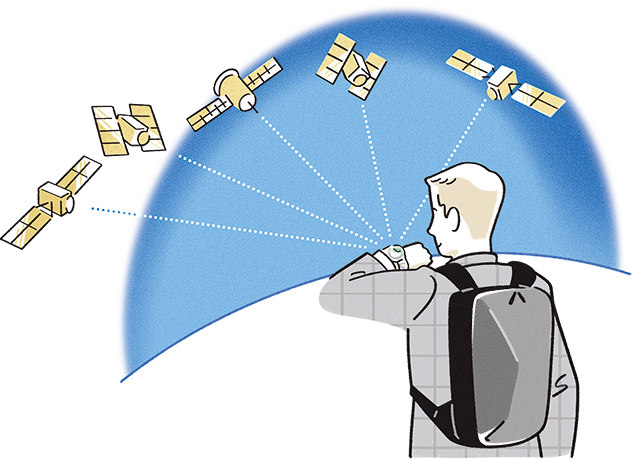
Seiko was quick to enter the field of radio-wave clocks, starting with a radio-controlled clock released in 1963 that automatically corrected the time based on signals transmitted by a NHK (Japanese public broadcaster) radio. In the 1990s, with the development of a system of ground-based transmitting stations in Japan, Seiko launched a series of radio-adjusted wristwatches, and then in 2012, introduced the world's first s GPS solar-powered watch.
This amazing watch runs on solar power and, with just the push of a button, checks radio signals from at least 4 GPS satellites circling more than 20,000 km above the earth. It can instantly display the exact time for any location in any time zone anywhere on the planet. Following the pioneering development of the quartz wristwatch, this was the second major revolution that Seiko brought about in the global watch industry. For this reason, Seiko revived the name of the Astron quartz watch for this equally revolutionary timepiece. Just as the original Astron changed watchmaking forever, Seiko believes that the GPS Solar model of the same name will become a new world standard.
The Astron collection continues to evolve and remains a proud symbol of Seiko’s commitment to innovation.
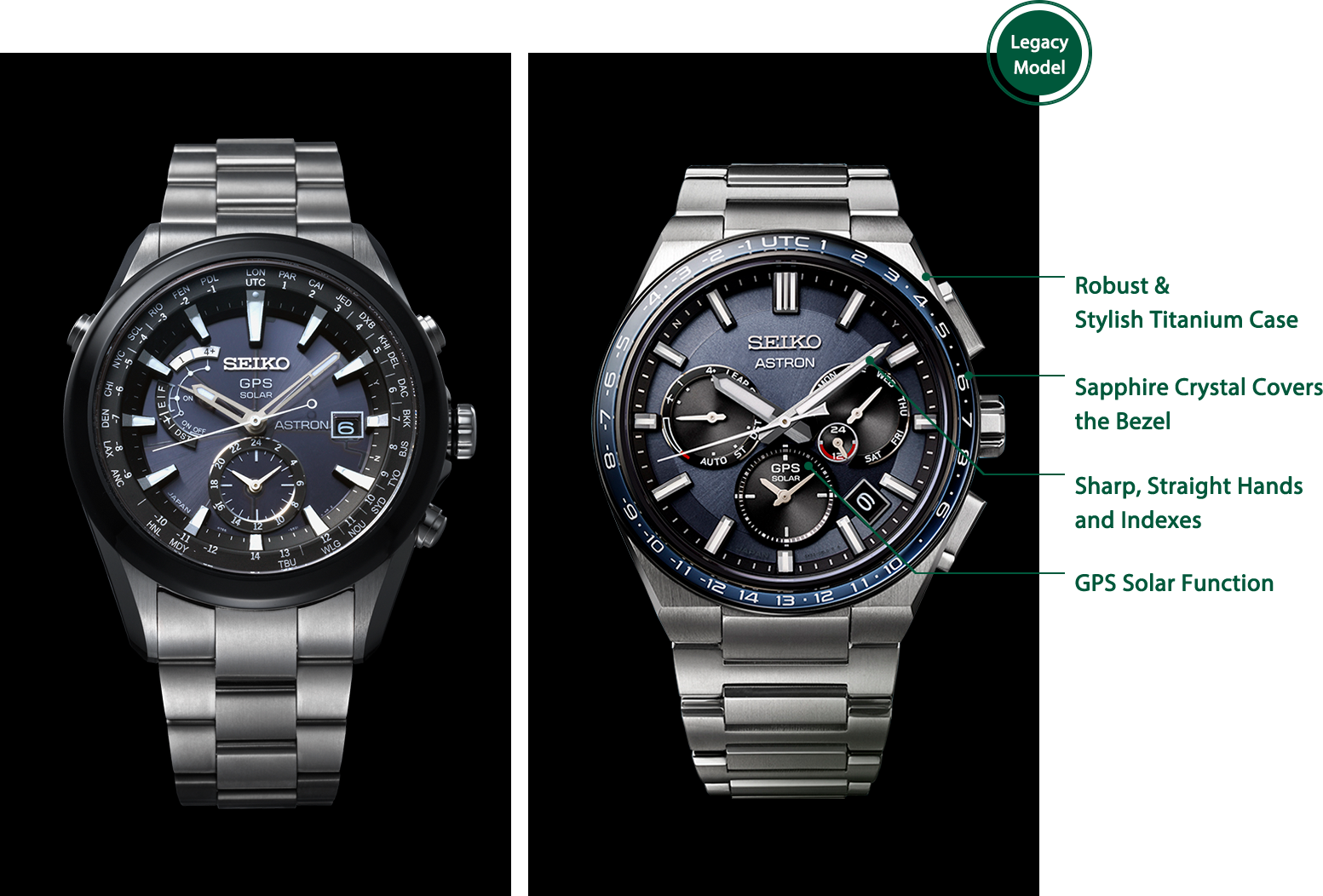
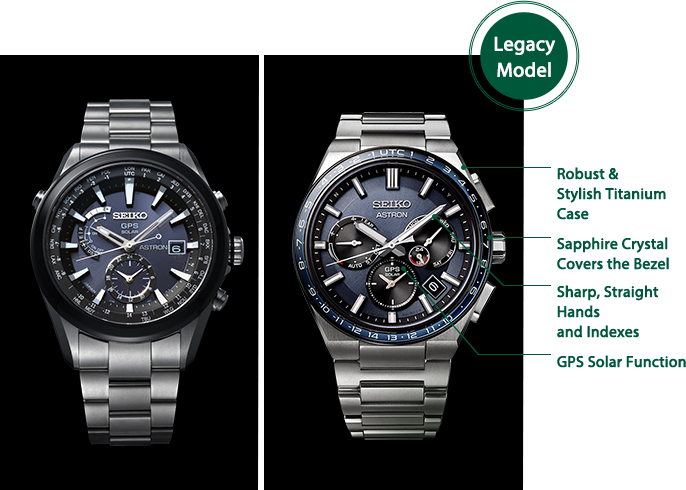
- 2012
Seiko Astron 7X Series Model
The world’s first GPS solar watch. Released as a next-generation model that could receive hyper-accurate time and location signals from the GPS satellites, would work flawlessly anywhere in the world, and run on solar power.
- 2022
Seiko Astron 5X Series Model
On the 10th anniversary of the GPS solar watch, Seiko released a newly designed model featuring a titanium case and sapphire crystal-covered bezel. This watch symbolized the Astron’s positioning as the ultimate high-tech watch for a new era.
Paving the Way
for Smart Phones?
Digital Watches
in the ’70s and ’80s
A Profusion of
Innovative Watches
Seiko pioneered quartz technology in the 1960s, partly out of a desire to perfect ongoing research and partly to be the first in the world to develop and market a super-accurate, wearable, next-generation technology. But Seiko did not stop there. The company went on to produce a wide variety of quartz watches.
During the 1970s and ‘80s, Seiko released a succession of innovative digital watches equipped with a variety of unprecedented functions. The Calculator included a convenient mini-calculator, the TV Watch featured a small LCD screen so that wearers could enjoy TV anytime, and later on the firm released a wrist computer system with a special keyboard.
Looking back on these models now, they seem a bit extreme, as if Seiko was trying to adapt functions that are not ideally suited to a wristwatch. However, we could also see these as multi-function devices that anticipated the coming of smartphones. Always driven by a relentlessly innovative spirit, Seiko will continue to make watches that are one step ahead of the times.
-
26
Difficult to Produce:
Round Digital Watch1973LCD
Digital Quartz 05LCSeiko was determined that a watch must be not only highly accurate, but also beautiful. This model features a smooth, round stainless steel case that was quite a challenge to manufacture at that time.
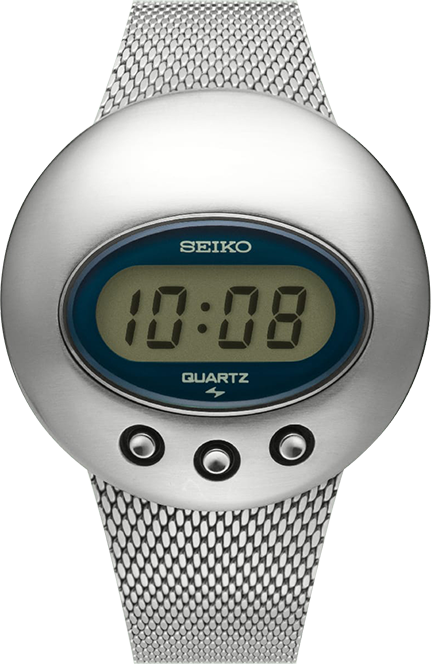
-
27
It All Adds
Up to Convenience1977Calculator
In addition to displaying the time, this model has a calculator function which was operated by pushing buttons on the side of the case. A special stylus was supplied with the watch to press the small buttons on the keypad.
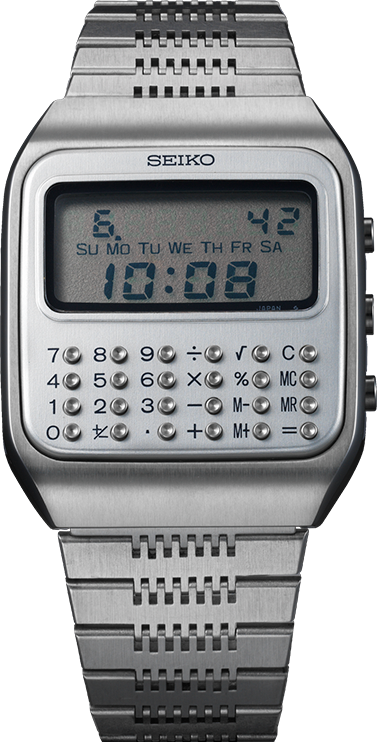
28
A TV
You Can
Take With You
TV Watch
This state-of-the-art watch could not only show TV programs on a 1.2 inch LCD display, but could also receive FM radio signals. This model was listed in the Guinness Book of Records in 1984 as the smallest television in the world.
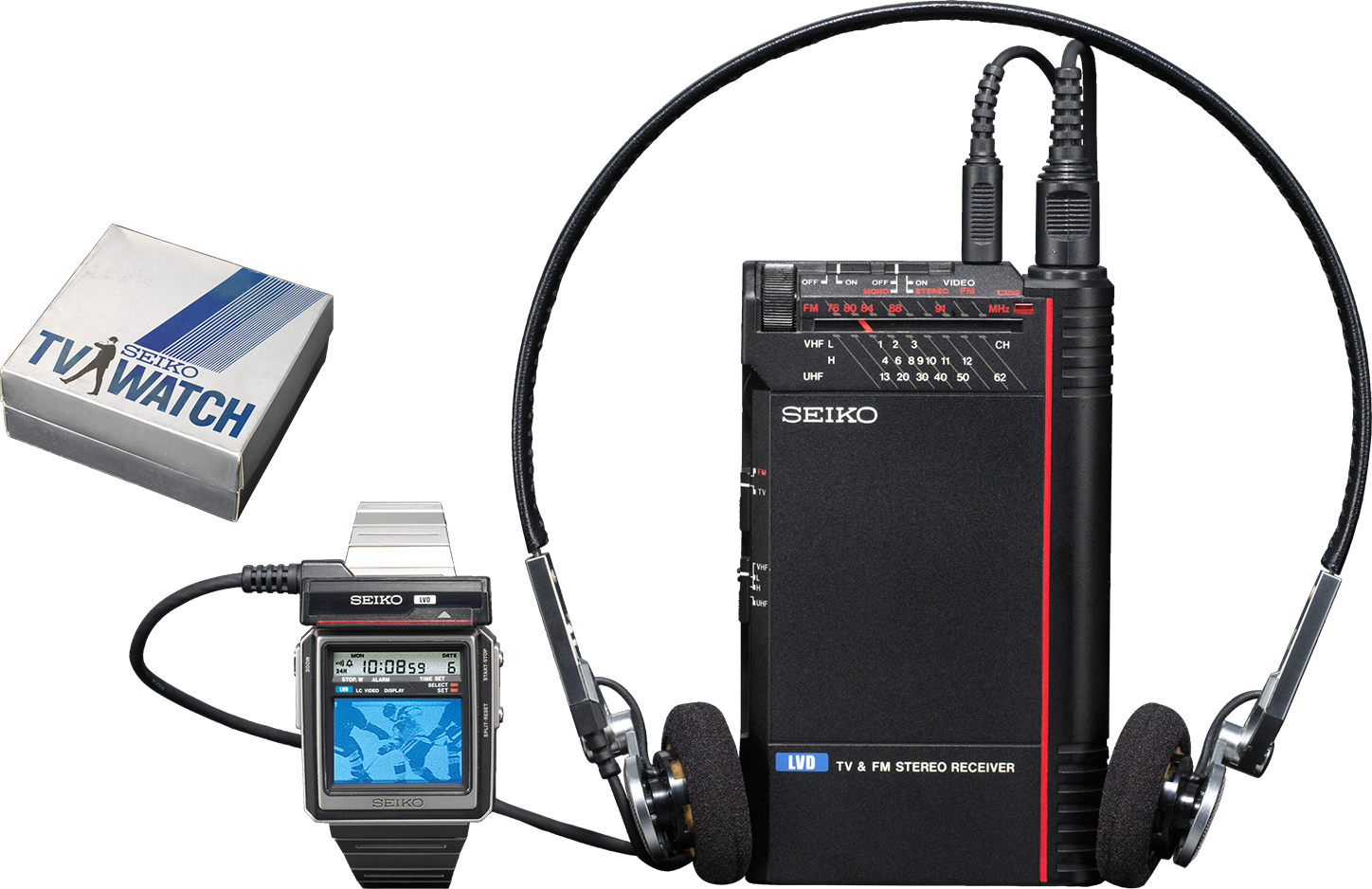
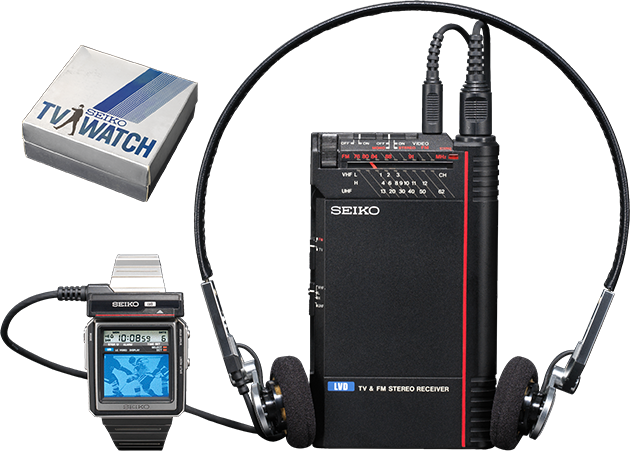
29
A Computer
on Your Wrist
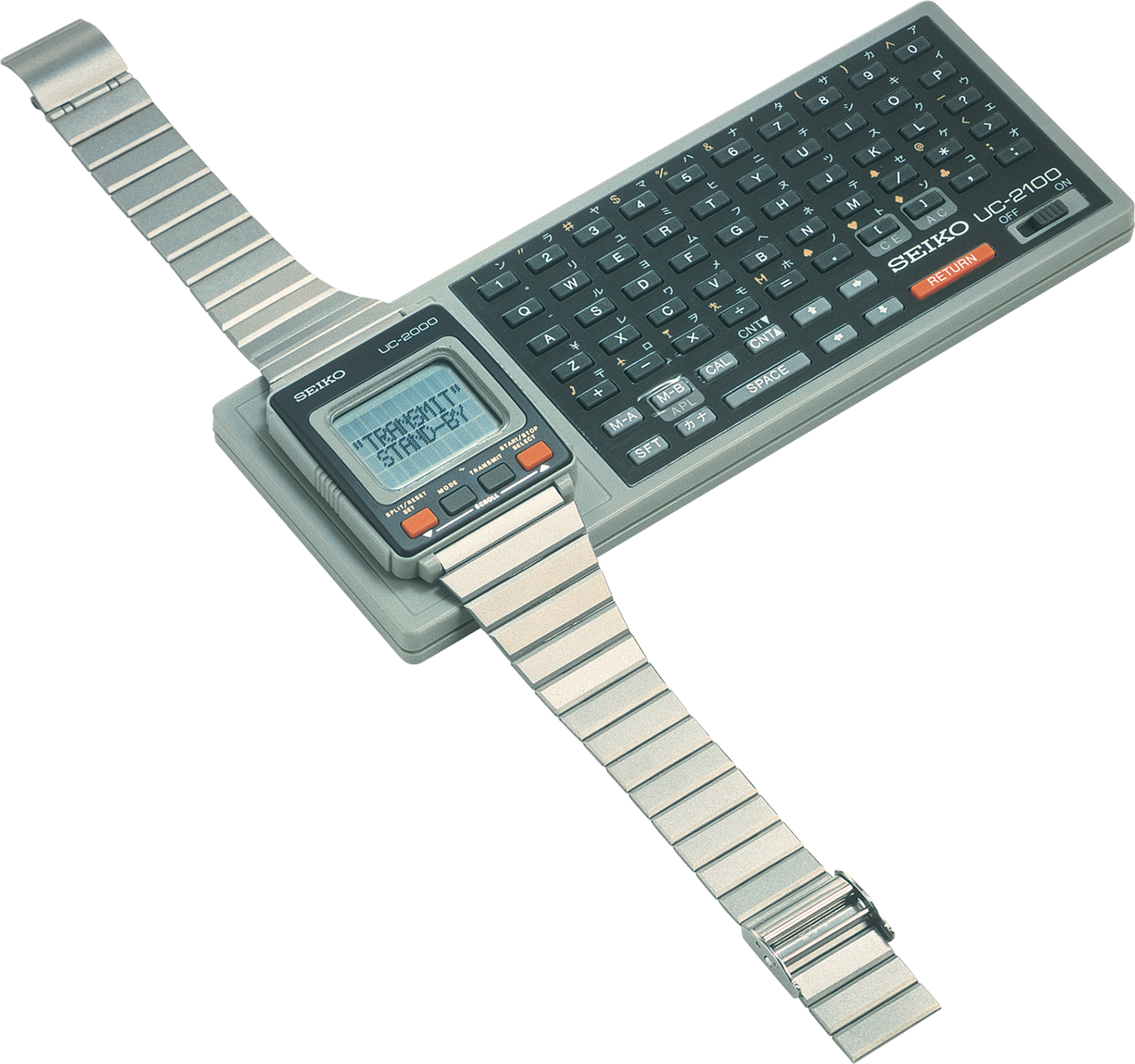
The Wrist Computer System
The world’s first wristwatch that featured computer functions. This very unusual model comprised a watch and a controller attachment, including a novel keyboard for inputting data. This watch gave an exciting glimpse into the future.
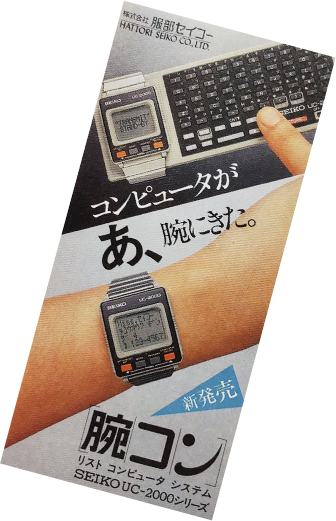
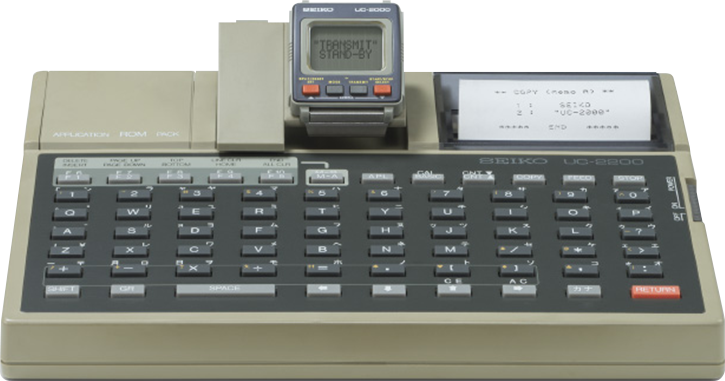
The advanced cordless design, which used electromagnetic induction to transfer character data from the external keyboard, was revolutionary. In addition to memo and calculator functions, this model even had a game function, and this multi-functionality presaged the advent of today’s smartphones and tablets. The design was sharp and clean, with the watch, controller, and keyboard all having a straight, box shape. This streamlined, futuristic appearance was also a key feature.

-
30
Works as
a Pager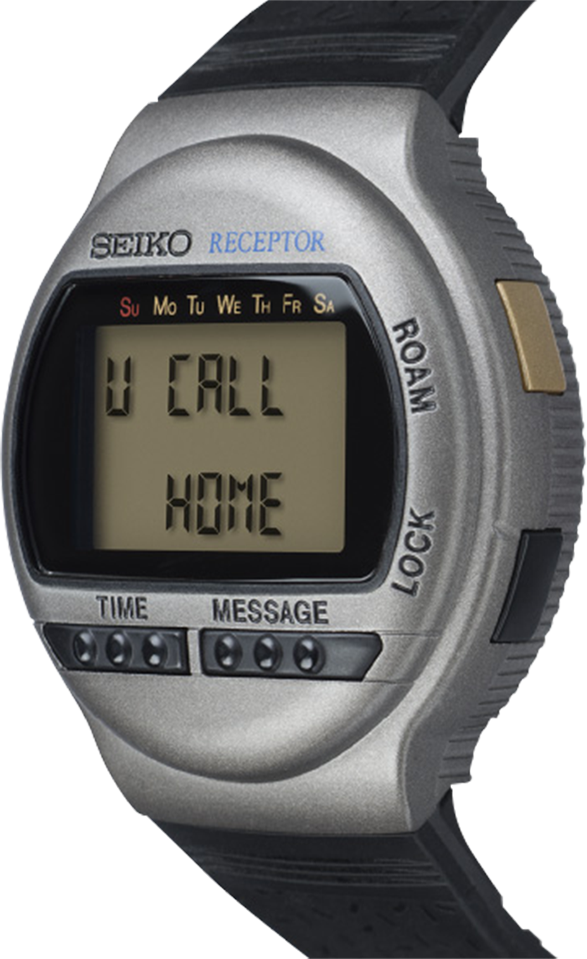 1990
1990Receptor
Before cellphones were available, wireless pocket pagers were very popular. Seiko launched the world’s first wristwatch equipped with a pager. It could receive short text-message signals sent from regular telephones via radio stations.
-
31
Air Pump
for Inflation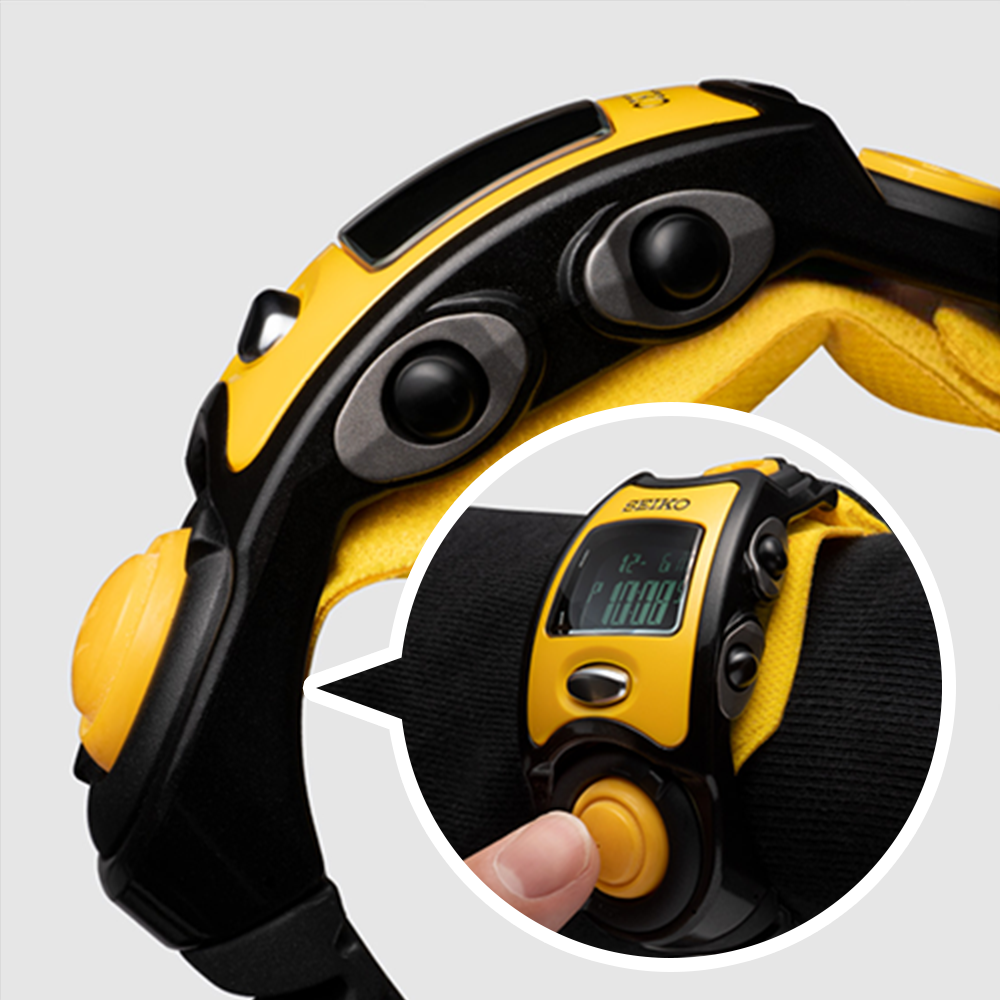 1997
1997Air Pro
This unusual model was the result of scientific analysis of the human body and human behavior. To increase wearing comfort, Seiko developed a band containing an air chamber, which could be inflated using the built-in air pump.




